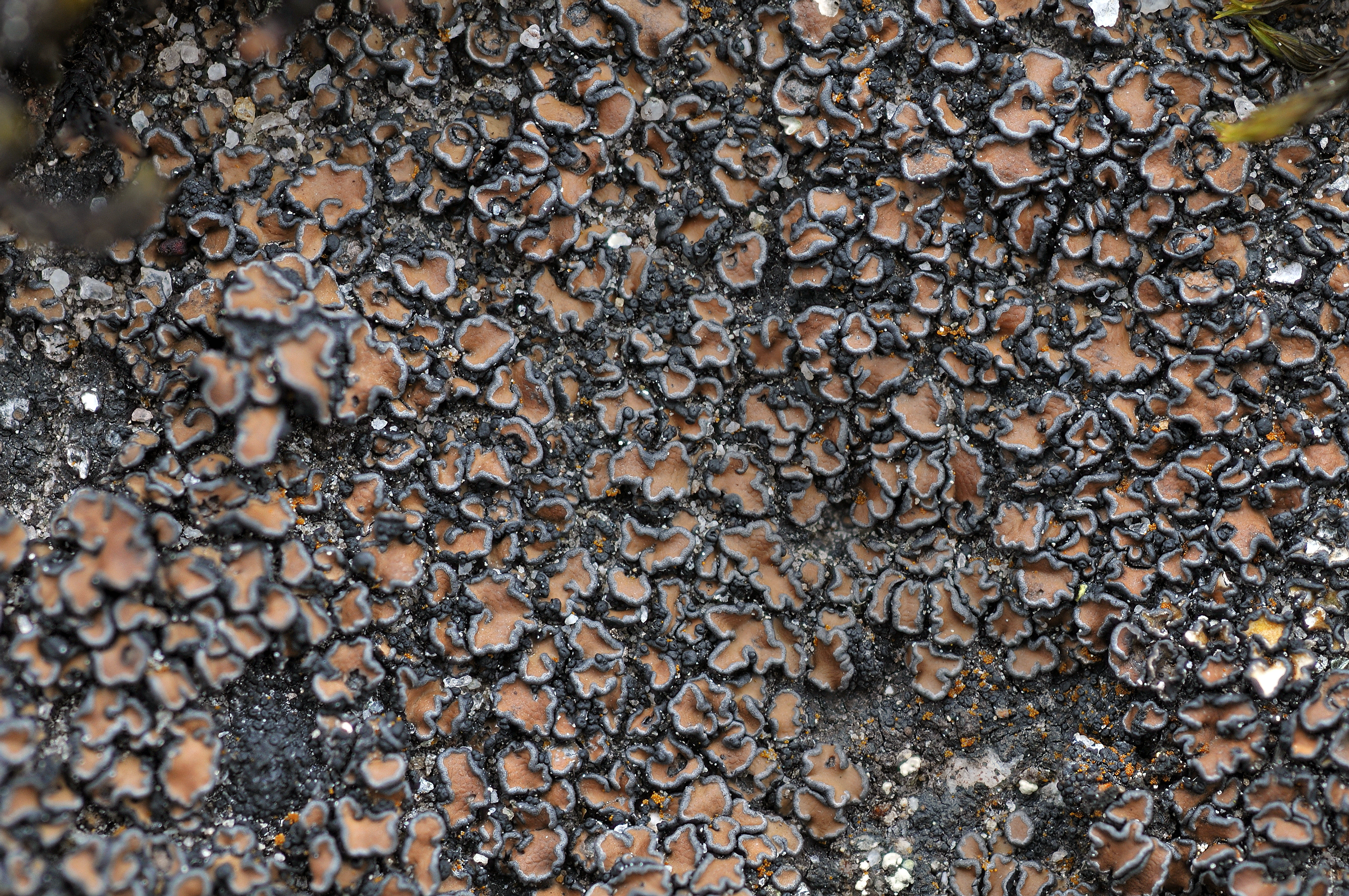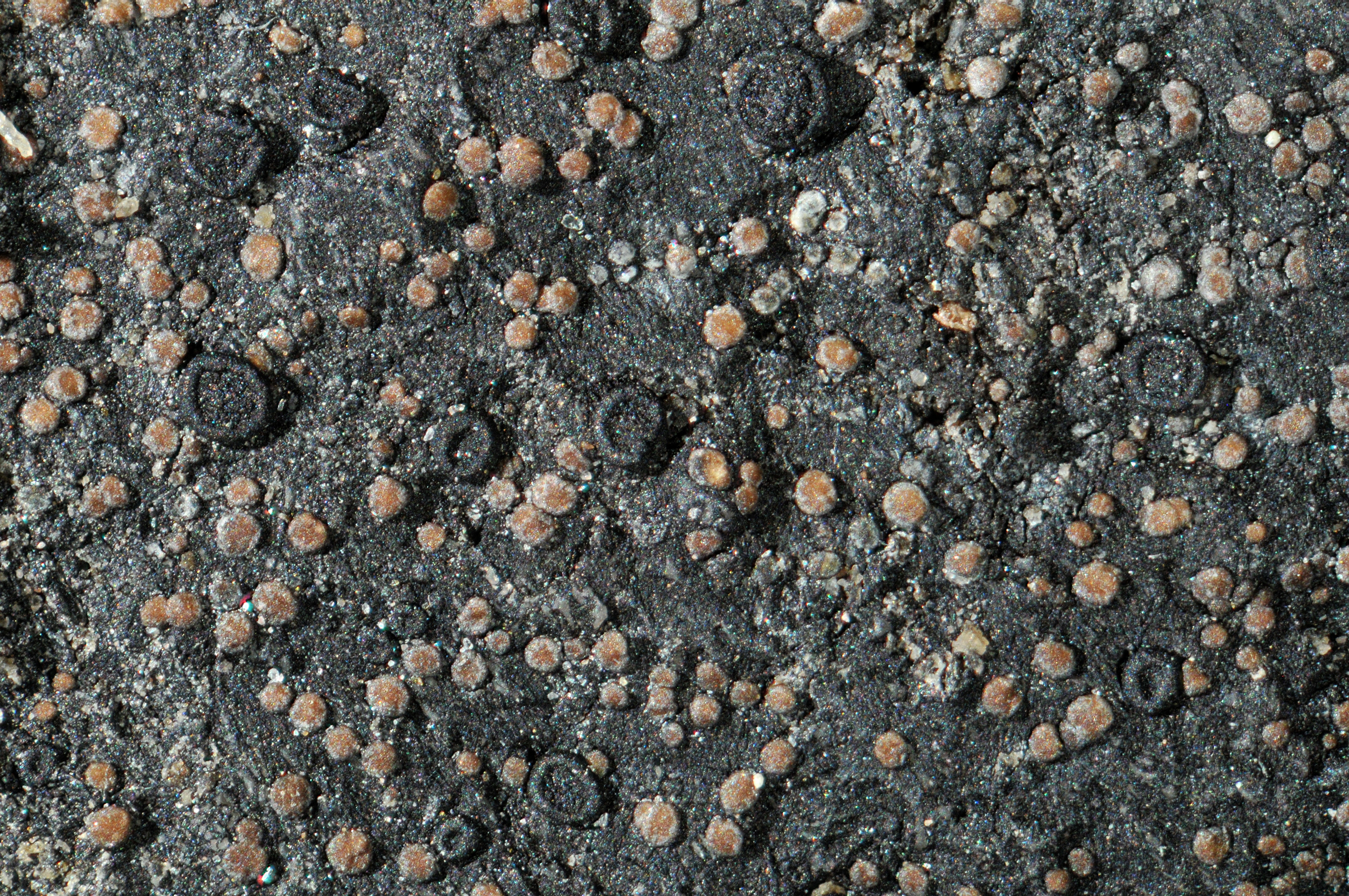Rhizocarpon rittokense
- Innhold
- Morphology
- Chemistry
- Habitat
- Comment
- Look-alikes
Morphology
Thallus areolate, up to 10 cm diam.; hypothallus well developed, black; areolae up to 1 mm diam., medium brown, shiny, with a medium grey to greyish black margin, scattered to contiguous, more or less orbicular, plane to deeply concave, peltate; medulla KI–. – Apothecia up to 0.7 mm diam., black, epruinose, orbicular, remaining more or less plane and distinctly marginate; excipulum brownish black in the rim, K+ red, pale brown in inner part, containing crystals dissolving in K; hypothecium dark brown, K–; hymenium colourless or pale brown to pale green; epihymenium dark brown, containing crystals dissolving in K, K+ faintly red; ascospores 8 per ascus, 1-septate, when young pale brown, later becoming dark brown, 20–26 × 12–16 µm. – Conidiomata not seen.
Chemistry
Barbatic acid (in Norway); spot tests: medulla PD–, K–, C–.
Habitat
On siliceous, sun-exposed rock walls and boulders, mainly in the mountains but also in open conifer forests.
Comment
The peltate areolae and 1-septate ascospores are diagnostic. Barbatic acid as major compound occurs elsewhere among Nordic members of the genus only in R. subgeminatum, a species with very different ascospores. A stictic acid strain occurs outside the Nordic countries.


